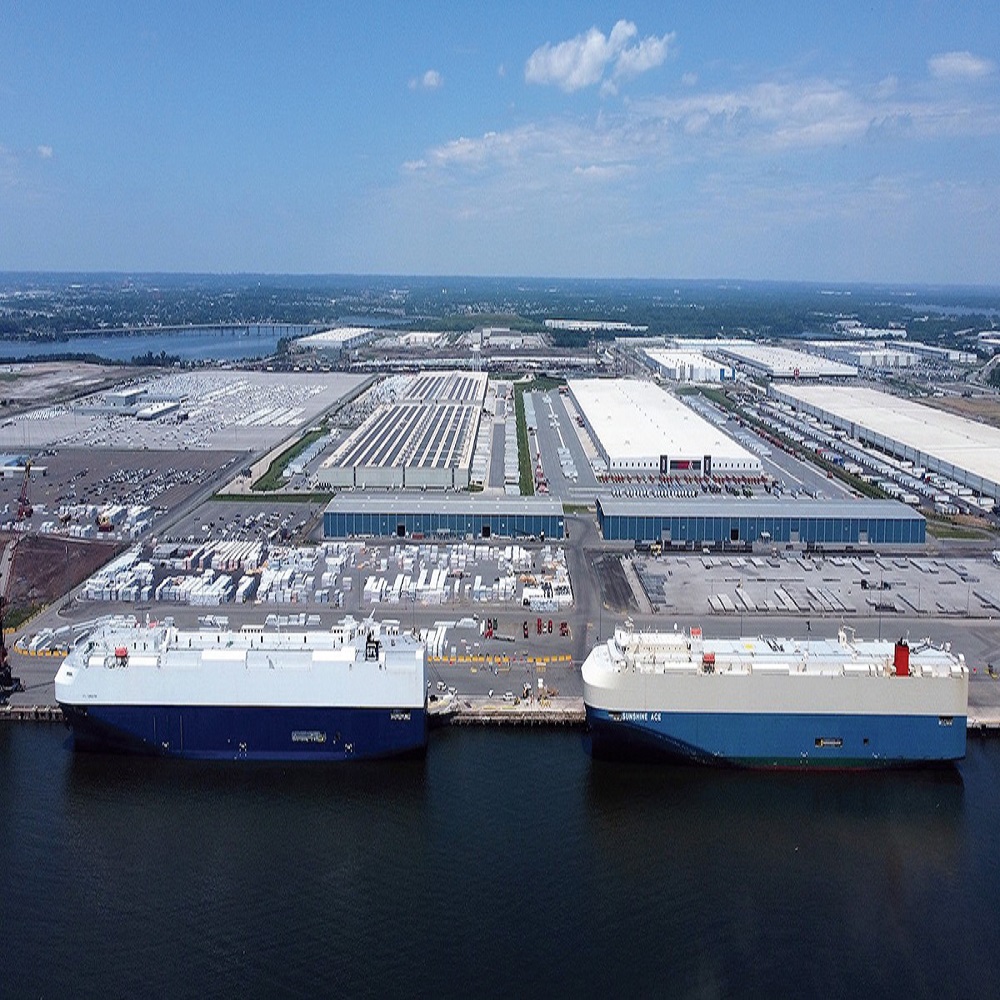Tradepoint Atlantic (TPA), situated in Baltimore, grew into a significant multimodal global logistics hub in less than ten years.
In the short period since it opened, Tradepoint Atlantic has become a major hub for global logistics, and additional significant projects are already in the pipeline. It will shortly celebrate its tenth anniversary.
The 3,300-acre logistics center is situated at the Port of Baltimore's Sparrows Point, the former location of Bethlehem Steel. The attraction of the vast waterfront area next to one of the world's largest consumer regions is almost unmatched anyplace else on the US East Coast, even if ecological cleanup and industry reconstruction at the location were difficult tasks.
Tradepoint Atlantic Vice President Russell Williams told AJOT, "We have the space, the multi-modal capability, and the strategic location to provide a customized logistics solution to users looking for long-term supply chain resilience." "Now is the ideal time because we understand how the logistics and transportation sector operates.
Furthermore, the logistics hub's distinct location—TPA was the only terminal facility in the Port of Baltimore situated south of the Francis Scott Key Bridge—is a defining feature of the company's robust supply chain. Because of this, TPA was able to continue operating after the Francis Scott Key Bridge collapsed on March 26 due to an accident with the MV Dali, which closed the Patapsco River's 50-foot-deep shipping channel. After the bridge collapse, their location proved vital in allowing the continuous handling of redirected vessels carrying a range of bulk, breakbulk, and ro/ro (vehicles and out of gauge freight) cargos.
Given that the Port of Baltimore handled the most automobiles in the United States in 2023—roughly 850,000—row-and-row operations play a critical role in the port's operations. In addition to being able to handle roll-on/roll-off (RORO) ships, TPA offers direct connections to the CSX and Norfolk Southern railroads. It also has interstate highway links (I-70, I-81, I-83, I-95, I-97, and I-895) that make it easier for vehicles and other cargo to move forward. Additionally, TPA was able to provide space to support Federal, State, and Local organizations during their recovery operations due to the site's wide acreage and fortunate position.
As of this writing, Williams notes, "There's been an incredible amount of hard work, around the clock, and it's incredible to see the amount of progress that they've made so quickly, the collaborative approach with everybody, it has been nothing short of amazing." The channel is now free of debris and open for business vessel traffic.
Although TPA has made a name for itself as a multimodal global logistics hub, the 3,300 acres still have a lot of space for expansion, including a planned container terminal. We deal with a variety of cargo kinds, including bulk, break bulk, roll-on/roll-off, and heavy-duty. Furthermore, Williams stated that the current stage of construction will be the Sparrows Point Container Terminal.
The world's top ocean container carrier, Mediterranean Shipping Company (MSC), and TPA, in partnership with Terminal Investment Limited (TiL), unveiled the container terminal proposal in October 2022. A total of 330 acres will be redeveloped as part of the project; 168 acres will be used for new container development and an improved intermodal yard, and the remaining 162 acres will be used for support facilities to improve the terminal's overall operations.
The Sparrows Point Container Terminal (SPCT) will be a container terminal that is connected to trunk lines operated by CSX and Norfolk Southern, both of which have a countrywide distribution reach. The yard will be an intermodal one. A $1 billion private investment project called the new SPCT terminal is expected to create approximately 6,000 indirect jobs in addition to 1,100 direct jobs.
According to Williams, the proposed container terminal will enable the Port of Baltimore to develop into a much bigger center that serves the entire East Coast as well as the Midwest market. This is a crucial reach that is required to draw in and keep leading international liner container transport companies like as MSC.
Furthermore, the revised estimate will increase the Port of Baltimore's total TEU handling capacity by 70% from the standpoint of a regional port. With other ports along the Atlantic Coast including Virginia, Charleston, Savannah, and New York/New Jersey, the port will be able to compete more effectively as a result.
Even though the upcoming container port is the main story, TPA has several other projects in progress that represent a diverse range of businesses. For instance, the University of Maryland Medical System (UMMS) declared in March 2024 that it had leased a 400,000 square foot Logistics Operation Center at the TPA site and begun construction on it. Every aspect of the UMMS supply chain will be managed by the new facility.
UMMS is the biggest healthcare system in Maryland, providing quarter of the state's healthcare needs. However, UMMS is merely the most recent of several businesses to choose to establish themselves at the TPA's Sparrow Point location. Well-known companies including BMW, Amazon, Home Depot, Under Armour, Floor & Décor, and McCormick are among the more than 50 tenants that call TPA home.
In the end, the true benefit of the TPA for such a broad group of businesses is the multimodal flexibility of the logistics hub, which includes the private railway, connections to the two Class 1 railroads, links to the interstate road system, and a waterfront that opens directly into the main ship channel, which is fifty feet deep and leads to Chesapeake Bay. Whether it's truck logistics focused, rail logistics focused, or marine focused, it is, as Williams states. It is uniting across all forms of transportation. We will all grow as a result of all of this

Categories

Magazine Editions



















